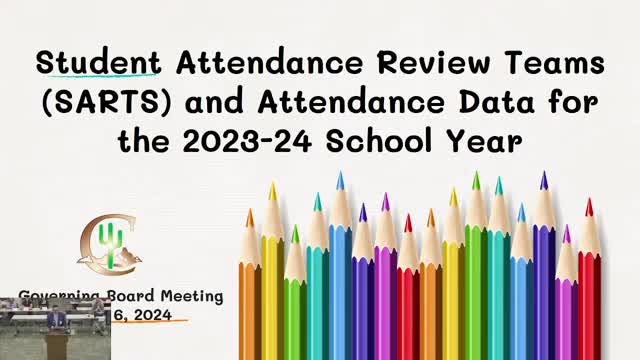Schools launch innovative strategies to combat chronic absenteeism
June 07, 2024 | Cartwright Elementary District (4282), School Districts, Arizona

This article was created by AI summarizing key points discussed. AI makes mistakes, so for full details and context, please refer to the video of the full meeting. Please report any errors so we can fix them. Report an error »

In a recent government meeting, officials outlined significant strides made in addressing chronic absenteeism within the district's schools. The introduction of a new leadership role, the assistant director of child welfare and attendance, has spearheaded innovative strategies aimed at improving attendance rates. This initiative has led to a data-driven approach that includes home visits, transportation assistance, and updated attendance policies.
Key initiatives discussed include collaboration with school principals to conduct home visits, which have proven effective in identifying barriers to attendance. Over the past year, 140 home visits were conducted, allowing staff to engage directly with families and tailor support to their unique circumstances. The attendance director, Sarah Hernandez, emphasized the importance of maintaining open communication with families through follow-up texts, fostering a supportive environment for students.
The meeting highlighted a notable improvement in attendance rates across the district, with an average increase of 0.8% compared to the previous year. However, concerns were raised regarding kindergarten attendance, which, despite a 1.3% increase, remains the lowest in the district at 89.9%.
Chronic absenteeism, defined as missing 10% or more of the school year, has seen a significant reduction from 32.7% to 24.9% this academic year, translating to approximately 100 additional students receiving consistent access to education. This achievement is particularly noteworthy given the statewide average of 28% chronic absenteeism, with disadvantaged communities facing even higher rates.
Looking ahead, district officials plan to expand successful pilot programs, enhance data tracking systems, and strengthen community partnerships to further combat absenteeism. The commitment to improving attendance is seen as crucial for the academic success and overall well-being of students, with a focus on making consistent school attendance the norm for all scholars in the district.
Key initiatives discussed include collaboration with school principals to conduct home visits, which have proven effective in identifying barriers to attendance. Over the past year, 140 home visits were conducted, allowing staff to engage directly with families and tailor support to their unique circumstances. The attendance director, Sarah Hernandez, emphasized the importance of maintaining open communication with families through follow-up texts, fostering a supportive environment for students.
The meeting highlighted a notable improvement in attendance rates across the district, with an average increase of 0.8% compared to the previous year. However, concerns were raised regarding kindergarten attendance, which, despite a 1.3% increase, remains the lowest in the district at 89.9%.
Chronic absenteeism, defined as missing 10% or more of the school year, has seen a significant reduction from 32.7% to 24.9% this academic year, translating to approximately 100 additional students receiving consistent access to education. This achievement is particularly noteworthy given the statewide average of 28% chronic absenteeism, with disadvantaged communities facing even higher rates.
Looking ahead, district officials plan to expand successful pilot programs, enhance data tracking systems, and strengthen community partnerships to further combat absenteeism. The commitment to improving attendance is seen as crucial for the academic success and overall well-being of students, with a focus on making consistent school attendance the norm for all scholars in the district.
View full meeting
This article is based on a recent meeting—watch the full video and explore the complete transcript for deeper insights into the discussion.
View full meeting
